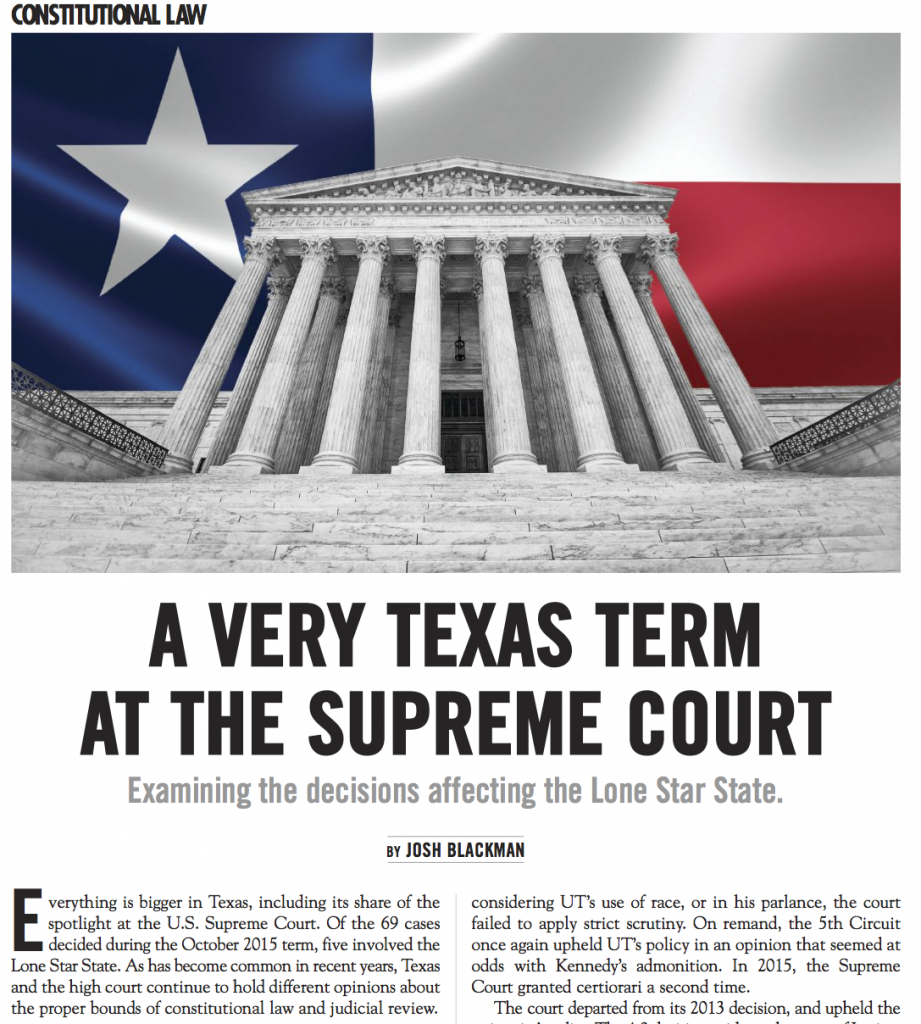I am proud to announce that the Illinois Law Review has published in Volume 116 my article “State Judicial Sovereignty,” logging in at 96 pages. Here is the abstract:
In our “dual sovereignty,” we have a dual judiciary. While the Constitution creates a single Supreme Court, and gives Congress the power to constitute inferior tribunals, predating our federal union were the courts of the states. Through concurrent jurisdiction, these courts, subject to the complete control of the states, were deemed parallel forums to adjudicate federal claims. Yet, in specific areas, Congress designated the federal courts as the exclusive forums of certain federal claims, depriving the state courts of that jurisdiction. In other areas, the Supreme Court has determined that state courts, with or without the consent of the state, are required to entertain certain federal causes of action.
Each of these well-known features of our judicial system — concurrent, mandatory, and exclusive jurisdiction — represents efforts by one sovereign, the federal government, to command and control the jurisdiction of another sovereign, the states. Though the power to mandate, and exclude state court jurisdiction has been construed broadly, certain limits have been placed on this authority based on a respect for the autonomy of each state to manage their courts. I refer to the basis of these constraints on federal power as state judicial sovereignty. State judicial sovereignty refers to the power of states to vest their courts with subject matter jurisdiction to hear, or not to hear, federal causes of action.
This article articulates a framework to explain how the autonomy of the states to control their own courts interacts with Congress’s efforts to use, or disregard the state courts for federal claims. Building on the analysis of concurrent, mandatory, and exclusive jurisdiction, I identify three attributes of state judicial sovereignty that are repeated throughout the Court’s precedents. First, state judge sovereignty refers to the constitutional obligations and state-law duties, of state judges with respect to federal causes of action. Second, state jurisdictional sovereignty, explains the autonomy of the states to vest their state courts with jurisdiction, subject to the strictures of the federal constitution. Third, state judge sovereignty, working under the auspices of state jurisdictional sovereignty, places a limit on the federal government’s power to regulate the state court, based on the anti-commandeering principle.
The bounds of federal authority over the way state courts conduct their business have remained undefined for over 200 years. This article aims to bring some clarity to those boundaries.
